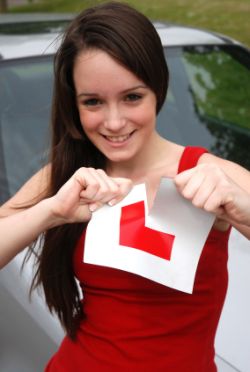When to use hazard warning lamps
Hazard warning lamps, are by their nature, lamps that you should not use routinely. However it is important to know when is the correct time to use them, and how to switch them on.
They are usually controlled by a button with a triangle marking on it, which itself flashes on and off when suppressed.
The warning lights will make all the indicators of the car flash at the same time, both front and at the rear of the vehicle.
You should only use the hazard lights when you want to warn other traffic that you've either broken down or had to stop in some sort of emergency: they are as the name implies to offer a warning to other road users that your car prevents a potential hazard in the position it is in.
Ordinarily you should only use them when stopped, but if you have to slow down really quickly on the motorway or on dual carriageway then you can turn them on as a warning to other drivers that they too should slow down more quickly than normal.
You will also have a warning triangle in your car, in most cases, which can be placed well behind a car when you breakdown on the motorway. On a motorway you would typically place the triangle around 150 to 200 metres behind your vehicle.
Related Articles...
The New Drivers Act
The New Drivers Act is legislation that applies to those who have just passed their test and are categorised as new drivers, which in this legal definition refers to the first two years of passing...
Using head restraints
Your car will have head restraints in it, but do you take the time to adjust these before using the vehicle and ensuring they are set at the correct level for you? Head restraints in vehicles are...
Nervous Driver Tips
Many people who learn to drive have a combination of nerves and excitement. Even if someone says they have no nerves and are perfectly confident when it comes to driving, the first time you get...
Show me tell me test
If you've not heard of the "show me tell me" test, then this is something
that happens at the start of the driving practical test as opposed to on the
theory test. They ask one of each of the two...
Penalty Points
There are different offence codes for different types of offences, and penalty points come in lumps from one single point right up to eleven, depending on the type and severity of an offence that...
Practical Driving Test
There is an online booking system available for a practical driving test which you can access from the DirectGov website.
The web address to do this is: ...
Driving Theory Centres
Finding the nearest driving theory centre to you is easy as the government makes this information available to you online.
There is a website that enables you to find the nearest driving...
Using emergency telephones
There are emergency telephones along motorways. There are telephones that occur roughly once per mile along the motorway which are connected to the emergency services.
There are also blue and...
What time of day should I book my driving test?
This is entirely up to you and so there is no right or wrong answer to this.
Many of us function either better in the morning or in the afternoon. If
you are a morning person then you will...
Things to look for when checking tyre condition
The tyres are extremely important elements of the car, yet many people do not think much about them when checking that their vehicle is roadworthy.
However, in addition to checking the amount...
Back to home page of driving theory test questions

